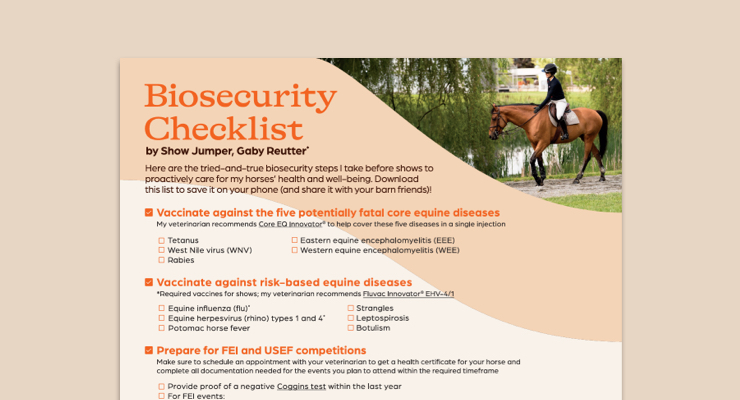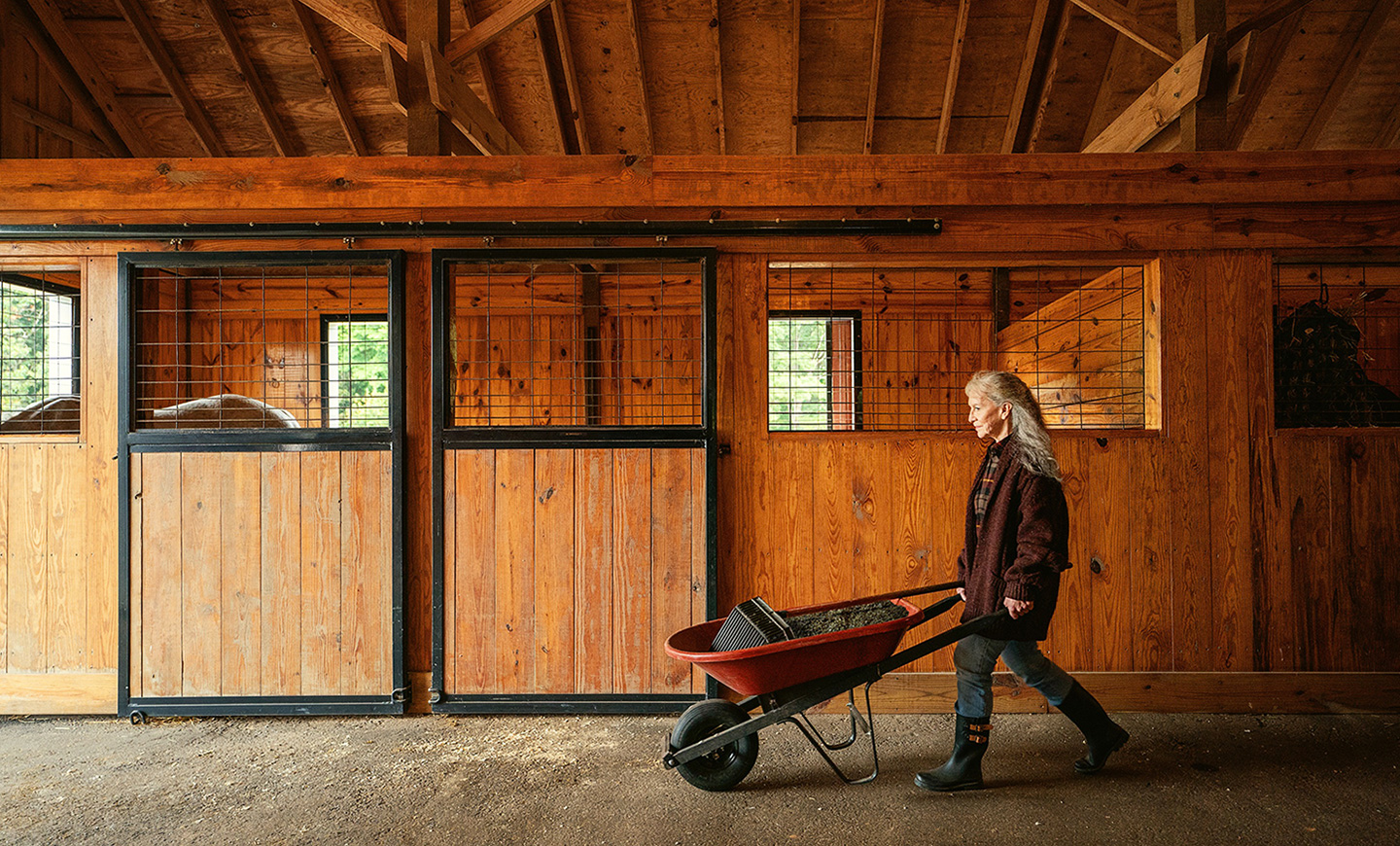
Show Jumper, Gaby Reutter’s Travel Checklist
6. Pasture management: The grass is always greener
After being cooped up all winter, horses are eager to graze. Make sure your pastures are ready. Early spring is the time to fertilize and seed as necessary. Avoid having too many horses and/or other livestock on the pasture at once and keep grass between 4 and 8 inches. Rotate pastures to prevent overgrazing, control parasites and ensure a lush, green buffet for your horses all season long.
Oh, but not too lush for our insulin-resistant horses who may benefit from a grazing muzzle. They are like lawnmowers with a sweet tooth, munching on grass as if they’re auditioning for a role in “Carbohydrate Chaos: The Equine Edition.” Your horse might think they’re at an all-you-can-eat buffet, but we’re here to remind them that summer bods are made in the spring.
7. Fecal egg counts: Tales from the tail-end
Ah, the glamorous world of fecal egg counts. While the process may seem less than glamorous, it’s a vital aspect of equine healthcare, helping to safeguard the well-being of our four-legged companions. By examining a horse’s feces for the presence and quantity of parasite eggs, veterinarians can determine the effectiveness of deworming protocols and tailor treatment plans to each individual horse’s need: because nothing says “bonding experience” like examining poop samples together with your veterinarian. So, grab your gloves and let’s dive into the delightful world of equine excrement analysis — it’s a crappy job, but someone’s gotta do it! Experts recommend less frequent yet targeted deworming practices (to avoid potential parasitic resistance), based on a horse’s age, life-stage and geographic zone.1 Here is a quiz to help you determine the right dewormer for your horse to ask your veterinarian about at the next wellness exam.
For adult horses in the spring, the American Association of Equine Practitioners recommends moxidectin, the active ingredient in Quest® Gel — the experts’ ingredient of choice against small strongyles.1
8. Pest control: The bug battle
With spring comes bugs, and with bugs come diseases. Implementing a pest control plan is key. This includes managing standing water, using fly predators or traps and keeping your barn as clean as possible to discourage unwanted guests.
9. Facility maintenance
Who needs CrossFit when you’ve got barn chores? It’s time to channel your inner DIY guru and tackle those springtime projects like a pro. From mucking stalls to fixing fences, it’s a workout worthy of an Olympic Medal. Just remember to stretch - those hay bales aren’t going to lift themselves!
Spring is a time of renewal, and with the right preparation, it can set the stage for a year of great health and performance for your horse. Remember, every horse is an individual, so while checklists and guidelines are great, nothing beats personalized care from a team who knows your horse inside and out. Here’s to a spring filled with sunny rides, happy horses and, maybe, just maybe, a little less hair.
Happy Spring Training!
Holly Helbig, DVM, for Zoetis
IMPORTANT SAFETY INFORMATION
Do not use Quest Gel or Quest Plus Gel in foals less than 6 months of age or in sick, debilitated and underweight horses. Do not use these products in other animal species, as severe adverse reactions, including fatalities in dogs, may result. Consult your veterinarian for assistance in the diagnosis, treatment, and control of parasitism.
- American Association of Equine Practitioners. AAEP parasite control guidelines. https://aaep.org/guidelines/parasite-control-guidelines. Accessed by June 2024.
All trademarks are the property of Zoetis Services LLC or a related company or a licensor unless otherwise noted.
© 2025 Zoetis Services LLC. All rights reserved. R1GEQ-01212
 Visit veterinary professionals site
Visit veterinary professionals site



